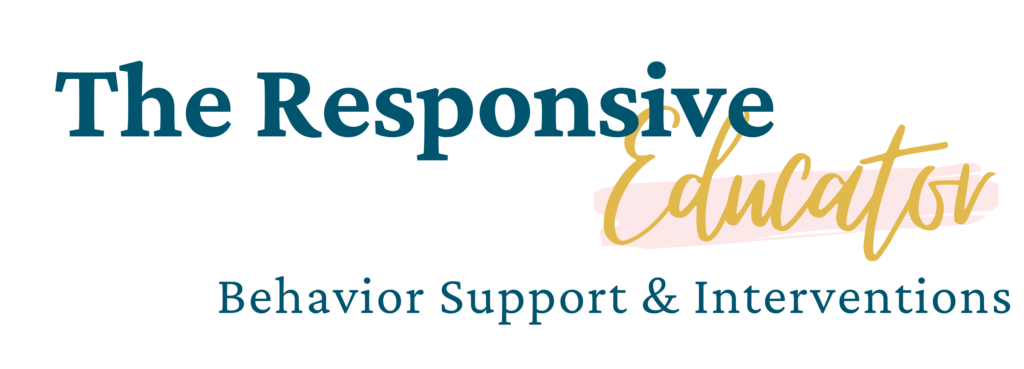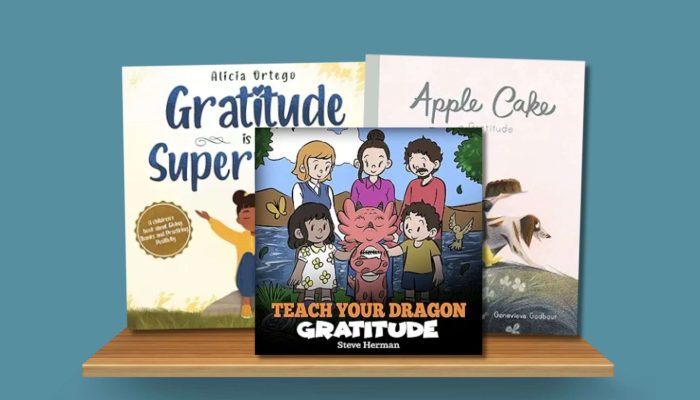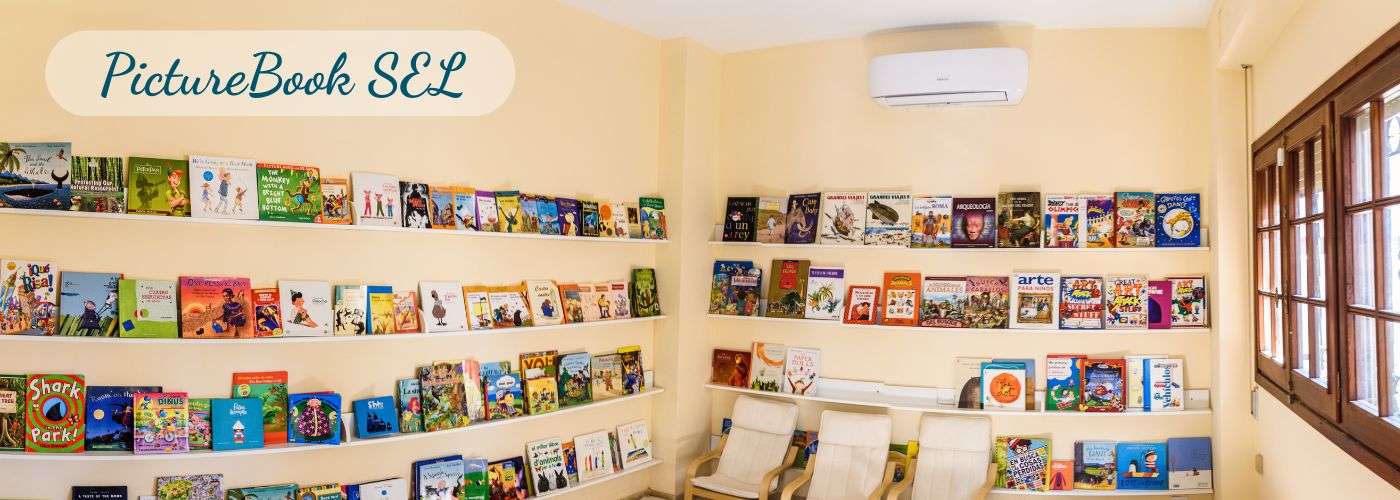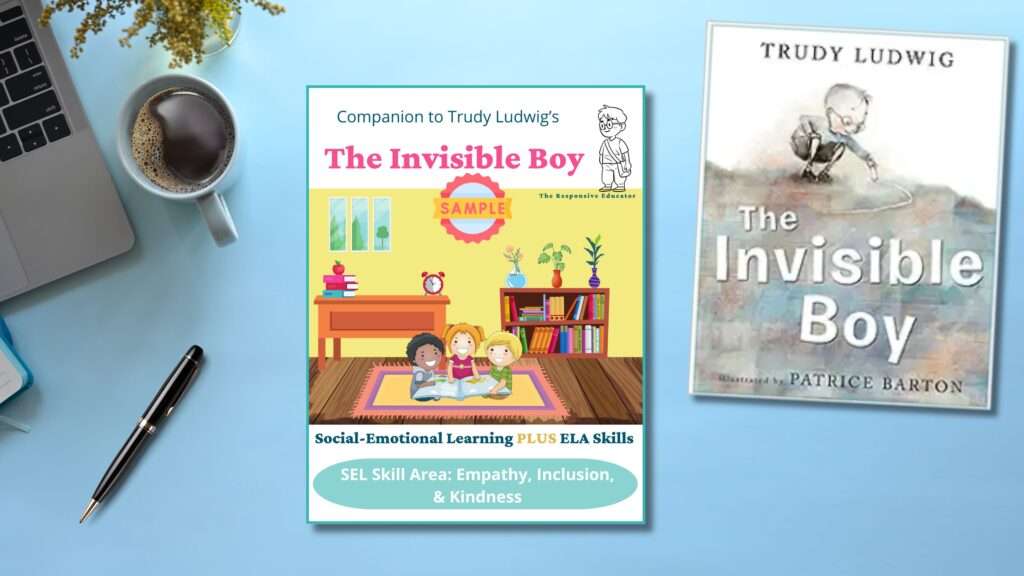


Teaching gratitude to children not only helps them appreciate the people and things around them but also builds their emotional resilience and positive outlook. Fostering thankfulness can be a challenge, especially in classrooms or at home, where children often focus on what they don’t have rather than what they do.
These selected picture books provide gentle, engaging ways to introduce gratitude, helping children understand what it means to be thankful and why it matters. From appreciating small, everyday moments to recognizing the kindness of others, each story offers unique perspectives and activities that can spark meaningful discussions and inspire a more appreciative mindset in young readers.
For some of the books on this site, I’ve created interactive read-alouds designed to enrich their use in the classroom. These resources include discussion questions, activities, and prompts that actively engage students and deepen their understanding of key themes. More interactive read-alouds are on the way! If there’s a specific book you’d like to see included, please reach out using the contact form at the bottom of the page.
For more insights on supporting social-emotional learning (SEL) and incorporating interactive read-alouds into your teaching, explore these posts:
(As an Amazon affiliate, I earn a small commission if you purchase products through the links on my posts. Thank you for your support!)
Summary: Apple Cake: A Gratitude by Dawn Casey is a charming rhyming story that encourages young children to appreciate the simple gifts of nature. With lovely, heartfelt rhymes, a child expresses gratitude for each element that contributes to an apple cake, from the trees and bees to the rain and sun. Through its rhythmic language and soft, nostalgic illustrations, the book captures the beauty of nature’s bounty. At the end, a gluten-free recipe for apple cake allows children and families to experience the joy of creating together.
Description: This beautifully illustrated picture book takes readers on a journey of appreciation as a young child gathers ingredients, each of which plays a special role in creating a delicious cake. With simple and accessible rhyming text, Apple Cake reminds children and readers of all ages to be thankful for the world around them. Genevieve Godbout’s gentle illustrations bring warmth and an almost vintage appeal, reinforcing the book’s cozy and uplifting tone. It’s an ideal read for Thanksgiving or any time when the theme of gratitude is celebrated, creating a special opportunity for both reflection and family bonding.
Reviews and Considerations: Readers praise Apple Cake for its delightful simplicity and stunning illustrations. Many find it a lovely tool for teaching gratitude to children, and the recipe at the end is a fun, interactive way to bring the story to life. However, some reviewers note that the recipe may yield a somewhat bland cake, with a few readers finding it dry or challenging to enjoy without adjustments. Still, the story’s focus on gratitude and its suitability for very young readers makes it a beloved addition to family bookshelves, with some readers enjoying it during holiday gatherings to emphasize kindness and appreciation.

Summary: Baditude! by Julia Cook follows Noodle, a boy who often sees the downside of things, developing what he calls a “baditude.” Through guidance from his mom and teacher, Noodle learns to shift his mindset from complaining to appreciation, reframing “have tos” as “get tos.” This book provides tools to help children (grades K-6) manage their attitudes and embrace positivity, making it especially useful in both home and school settings. As part of the Responsible Me! series, Baditude! encourages social-emotional growth with tips for educators and parents at the end.
Description: In this relatable story, Noodle’s negativity causes frustration for those around him until he starts to see things from a new perspective, realizing that his attitude impacts his happiness. With its humorous illustrations and kid-friendly narrative, Baditude! offers a fresh take on attitude adjustment, emphasizing gratitude and the value of positive thinking. Julia Cook’s writing, paired with straightforward yet engaging scenarios, makes the concept of gratitude accessible and understandable for young readers. The book aligns with character education goals, encouraging children to consider how they respond to daily challenges.
Reviews and Considerations: Baditude! is well-received by parents, teachers, and counselors alike for its engaging approach to teaching children about attitude adjustment. Educators find it a great addition to character education lessons, with many readers enjoying its accessible language and practical application. Some reviewers point out that the story ends with Noodle making a minor complaint, which may be confusing for some young readers; however, many see it as a lighthearted touch rather than a detriment. Overall, readers find Baditude! a valuable tool for starting conversations about gratitude and self-regulation, especially for children dealing with negativity or frustration.
The Baditude Interactive Read Aloud Lesson Plan ELA Centers SEL Activities resource offers a complete toolkit for fostering positive attitudes and growth mindsets in young learners. This 115-page lesson plan provides 15-20 hours of dynamic, skill-building activities, perfect for whole group, small group, or independent work. Focused on both ELA and SEL competencies, students engage in meaningful lessons that connect literacy with essential social-emotional skills, all while aligning with the CASEL 5 competencies.
Within this resource, students explore impactful concepts like repairing relationships, reframing negative thoughts, and choosing their attitude, enriched by relatable examples of resilience from figures such as Helen Keller and Bethany Hamilton. The resource includes differentiated activities, gratitude journals, writing prompts, and even family support notes, making it easy for educators to create a comprehensive, flexible approach to positive mindset development. Whether used weekly or monthly, Baditude provides ongoing support to students and teachers alike, reinforcing key attitudes and skills that contribute to a respectful, engaged classroom.
Perfect for whole group, small group, and independent work, this comprehensive resource ensures that students develop essential skills in an interactive and supportive way. The lesson plan includes a variety of discussion questions, activities, and prompts designed to help students understand and manage hyperactivity and inattention, promoting self-regulation and coping strategies.

Summary: Gratitude is My Superpower by Alicia Ortego follows Betsy, a young girl learning to appreciate life’s simple joys through the help of a “gratitude stone.” Each time Betsy encounters a challenging moment, she’s encouraged to focus on things she’s thankful for, gradually realizing that gratitude is something within her heart, not just tied to the stone. With rhyming verses and endearing illustrations, this book introduces children to gratitude, encouraging them to look for positives in everyday situations. A gratitude journal at the end provides a space for children to practice their own thankfulness.
Description: In this heartfelt story, Betsy learns the true meaning of gratitude with help from her mother and a special stone that reminds her to be thankful. As Betsy navigates various situations—from enjoying family and friends to appreciating nature—she starts to understand the difference a grateful attitude can make. The rhyming language and inviting illustrations add charm to the story, making it accessible for young readers. The gratitude journal included is a valuable addition for children to develop a daily habit of recognizing and appreciating what they have.
Reviews and Considerations: Parents, teachers, and counselors find Gratitude is My Superpower an effective way to introduce young children to the concept of gratitude. Reviewers appreciate its positive message and interactive elements, such as the gratitude journal, which reinforces the lesson in a practical way. Some readers, however, mention a personal preference to avoid the “magic” aspect of the stone, noting that the focus could be on internal gratitude without an external item. Despite these nuances, the story remains a beloved resource, praised for its rhyming prose, colorful illustrations, and engaging approach to building positive habits in children.

Summary: Grow Grateful by Sage Foster-Lasser follows Kiko on a camping adventure where she learns about gratitude through various experiences with her classmates. From appreciating nature to recognizing the support of friends, Kiko’s journey demonstrates the “theory of mind”—the ability to understand others’ perspectives and emotions. This story highlights how gratitude not only brings personal joy but also enhances relationships. A Reader’s Note at the end offers parents and educators advice on cultivating gratitude in children, making this book an interactive learning tool.
Description: This heartwarming story uses Kiko’s camping trip as a framework for teaching children about gratitude. Through small moments, like noticing the beauty of nature or supporting her friends, Kiko learns that gratitude can come from simple things and helps strengthen her connections with others. The illustrations are colorful and engaging, keeping young readers’ attention while emphasizing the beauty of gratitude. The book is part of the “Grow” series and includes a guide for adults with practical tips for encouraging grateful thinking in children.
Reviews and Considerations: Grow Grateful receives praise for its impactful message and relatable storyline. Educators and parents note that it effectively introduces children to gratitude in a way they can easily grasp and enjoy. The helpful Reader’s Note provides actionable ideas for adults to further explore gratitude with children. While some readers found a few parts slightly vague, most found it ideal for sparking discussions on kindness and appreciation. The book’s strong visual appeal and thoughtful message make it a recommended choice for home and classroom libraries.

Summary: I Am Thankful by Sheri Wall is a rhyming picture book that introduces young children to the spirit of gratitude and Thanksgiving. The story follows three diverse families as they each celebrate Thanksgiving in unique ways, including giving back to the community and cherishing time spent with loved ones. The book encourages children to recognize and appreciate the small and big things in their lives that make them feel grateful. The final pages include engaging activities and crafts for children to explore their own thankfulness, creating an interactive experience for readers.
Description: With delightful rhymes and vibrant illustrations, I Am Thankful is an inviting Thanksgiving story for toddlers and early elementary-aged children. The book’s focus on different family traditions introduces children to diverse cultural perspectives while reinforcing the theme of gratitude. In addition, the story fosters a sense of community and togetherness. The activities and crafts in the book’s back section allow children to express their gratitude creatively, making it a valuable resource for parents and educators.
Reviews and Considerations: Readers appreciate I Am Thankful for its colorful illustrations and inclusive story, making it accessible and enjoyable for a variety of family backgrounds. Many highlight its educational value and the thoughtful activities at the end, which encourage children to engage more deeply with the concept of gratitude. Some noted that the storyline might be lengthy for very young readers, but it’s a charming Thanksgiving read-aloud that aligns well with the holiday season.

Summary: Teach Your Dragon Gratitude by Steve Herman is a delightful addition to the My Dragon Books series, where Diggory Doo, a lovable dragon, learns about gratitude, appreciation, and thankfulness. Through everyday scenarios relatable to young children, Diggory experiences moments where he takes things for granted or feels entitled. His family gently guides him to recognize the value in what he has and the importance of appreciating others. This story provides practical examples to help children see the benefits of gratitude and concludes with suggestions on how to start a gratitude journal.
Description: In Teach Your Dragon Gratitude, young readers follow Diggory Doo as he learns to appreciate the simple joys around him. The narrative uses situations children often experience, such as feeling envious of others’ possessions or complaining about not having everything they desire, to demonstrate how gratitude can shift their perspective. Parents, teachers, and counselors will find this book a valuable tool for fostering positive attitudes and encouraging children to practice gratitude daily. The book also includes beautifully engaging illustrations that capture children’s attention and a companion journal for recording their thoughts on gratitude.
Reviews and Considerations: Parents, teachers, and counselors praise Teach Your Dragon Gratitude for its clear, relatable storytelling and engaging visuals. Readers note that the book effectively teaches children the value of gratitude without sounding preachy, making it a hit with children and adults alike. Many appreciate the inclusion of a gratitude journal as a practical tool for kids to apply what they’ve learned. While the story’s message is well-received, some reviews mention that very young readers may need guidance to fully grasp the concepts, making it a better fit for ages 5 and up.

Summary: The Gratitude Jar by Katrina Liu introduces young readers to gratitude through the story of Mina, a young girl who frequently feels jealous of what others have. When her family creates a gratitude jar, she begins to see her world differently, appreciating the simple joys around her. This story encourages children to embrace thankfulness as a daily practice, reinforcing values like contentment and positivity.
Description: This 2024 award-winning book blends a gentle narrative with vibrant illustrations, engaging children in the journey of finding happiness in everyday life. The Gratitude Jar inspires young readers to recognize and appreciate life’s small blessings, even amidst a world full of comparison. As Mina’s family starts their gratitude jar, readers see how a simple shift in perspective can foster a positive mindset. The book encourages children and families alike to create their own gratitude jars, promoting a fun and interactive way to develop gratitude as a family tradition.
Reviews and Considerations: Parents and educators praise The Gratitude Jar for its relatable approach to gratitude, noting how well the story addresses common feelings of envy in children. Many readers appreciated the actionable idea of a gratitude jar, which provided a hands-on way to reinforce gratitude at home. Some reviews highlight that the illustrations are captivating and add to the book’s appeal for young readers. A few readers mention that while the concept of gratitude is simple, it may still require parental reinforcement to make a lasting impact, especially for younger children who may need extra reminders.

Summary: The Monster Who Wanted It All by Andi Green tells the story of Zelly, a monster consumed by envy and a relentless desire for everything others have. As Zelly struggles with his possessive “mine, mine, mine” mindset, he soon learns that accumulating more does not lead to genuine happiness. This story follows Zelly’s journey toward understanding appreciation, contentment, and friendship, making it an ideal book for introducing children to themes like gratitude, jealousy, and the joy of sharing.
Description: In this charming addition to the WorryWoo Monsters series, Zelly’s story addresses relatable emotions that children often encounter, like envy and greed, with vibrant illustrations and engaging rhyming text. This book not only explores how envy can affect personal happiness but also helps children recognize the importance of gratitude and friendship. The accompanying activity pages offer additional interactive ways for children to practice these themes, making it a versatile resource for parents and educators.
Reviews and Considerations: The Monster Who Wanted It All has been praised for its captivating illustrations, engaging rhymes, and meaningful message that resonates with both children and adults. Many reviewers highlight its value as a conversation starter about managing emotions and recognizing when “enough is enough.” Parents appreciate that the story is accessible for young children, though some mention that younger readers may need further explanation on complex emotions like envy. A few reviewers noted that the book may have more text than expected but found that the rich visuals and storytelling kept kids interested.

Summary: The Thank You Book by Mo Willems is a delightful story featuring best friends Gerald, a cautious elephant, and Piggie, an optimistic pig. In this book, Piggie sets out to thank everyone who has contributed to her happiness, while Gerald worries she might forget someone important. With wit and charm, Piggie’s enthusiastic gratitude tour brings in familiar faces from across the Elephant & Piggie series, creating a nostalgic and heartwarming farewell.
Description: This final installment of the Elephant & Piggie series beautifully combines humor, expressive illustrations, and a meaningful message about gratitude. Ideal for young readers, the book emphasizes the importance of saying “thank you” to those who make a difference in our lives. The simple dialogue format makes it accessible for beginning readers, while the expressive characters and plot bring laughs and warm moments, making it engaging for all ages.
Reviews and Considerations: The Thank You Book has received high praise for its heartwarming story, engaging humor, and memorable characters. Many fans appreciate it as a fitting conclusion to the series, highlighting Mo Willems’ ability to create emotional depth within simple storylines. Readers who are familiar with the series enjoy seeing recurring characters and feel it provides a wonderful opportunity for children to learn about gratitude. A few reviewers mentioned that the book’s impact is strongest for those already acquainted with the series, as the familiar faces and connections are particularly rewarding.



Sign up now to receive a free sample of “The Invisible Boy” Interactive Read-Aloud Lesson Plan! This comprehensive resource includes engaging activities designed to help your students develop empathy and inclusion.
By signing up, you will also join our newsletter, where you’ll receive:
Join our community of educators dedicated to fostering social-emotional growth in the classroom!

( ) = Coming Soon
Body Safety & Personal Boundaries
(Conflict Resolution)
(Compromise / Cooperating)
Feelings & Emotional Awareness
(Sensory Processing)
(Sharing)
(Speaking Politely)
(Teasing & Bullying)
(Trauma Recovery)